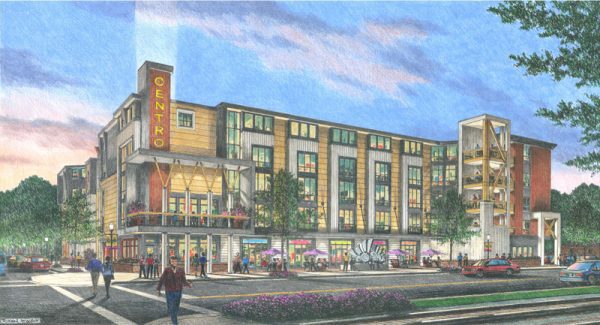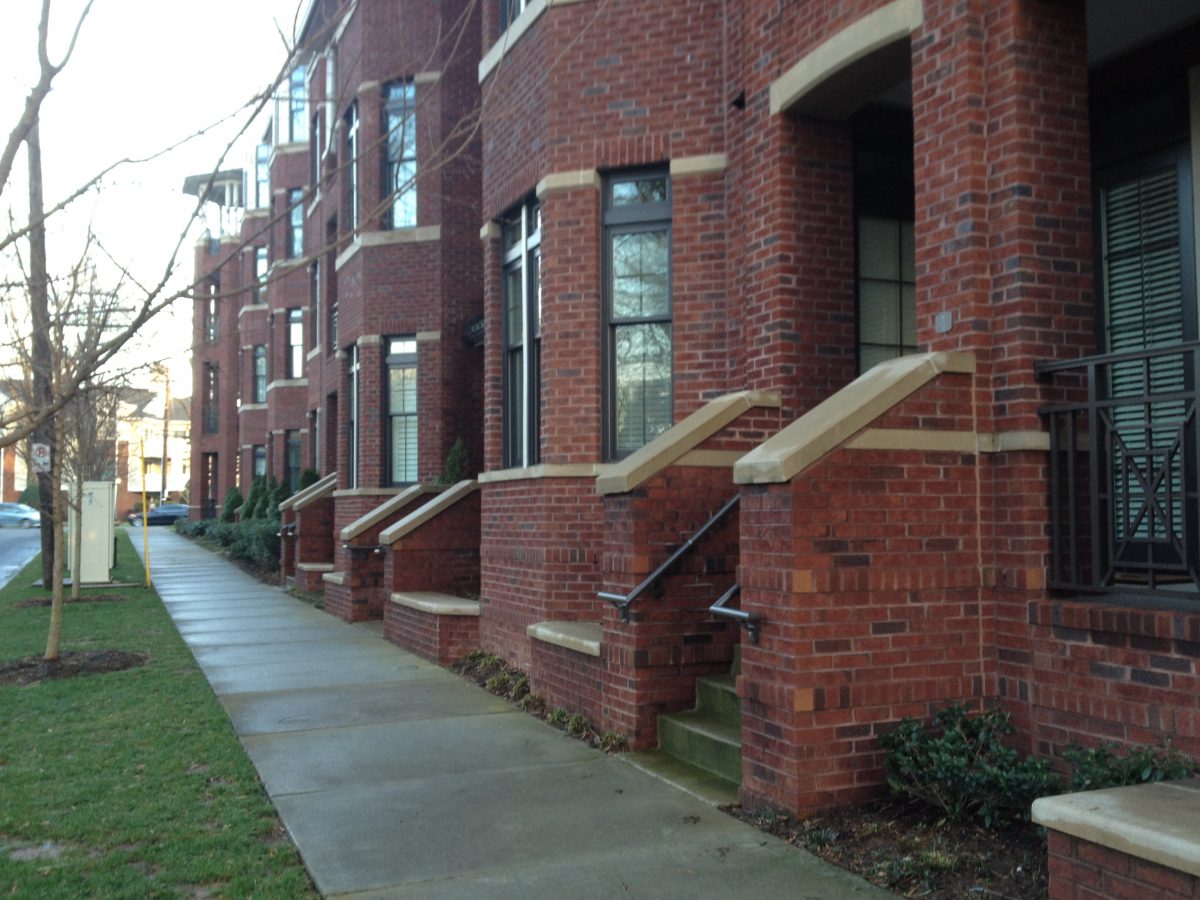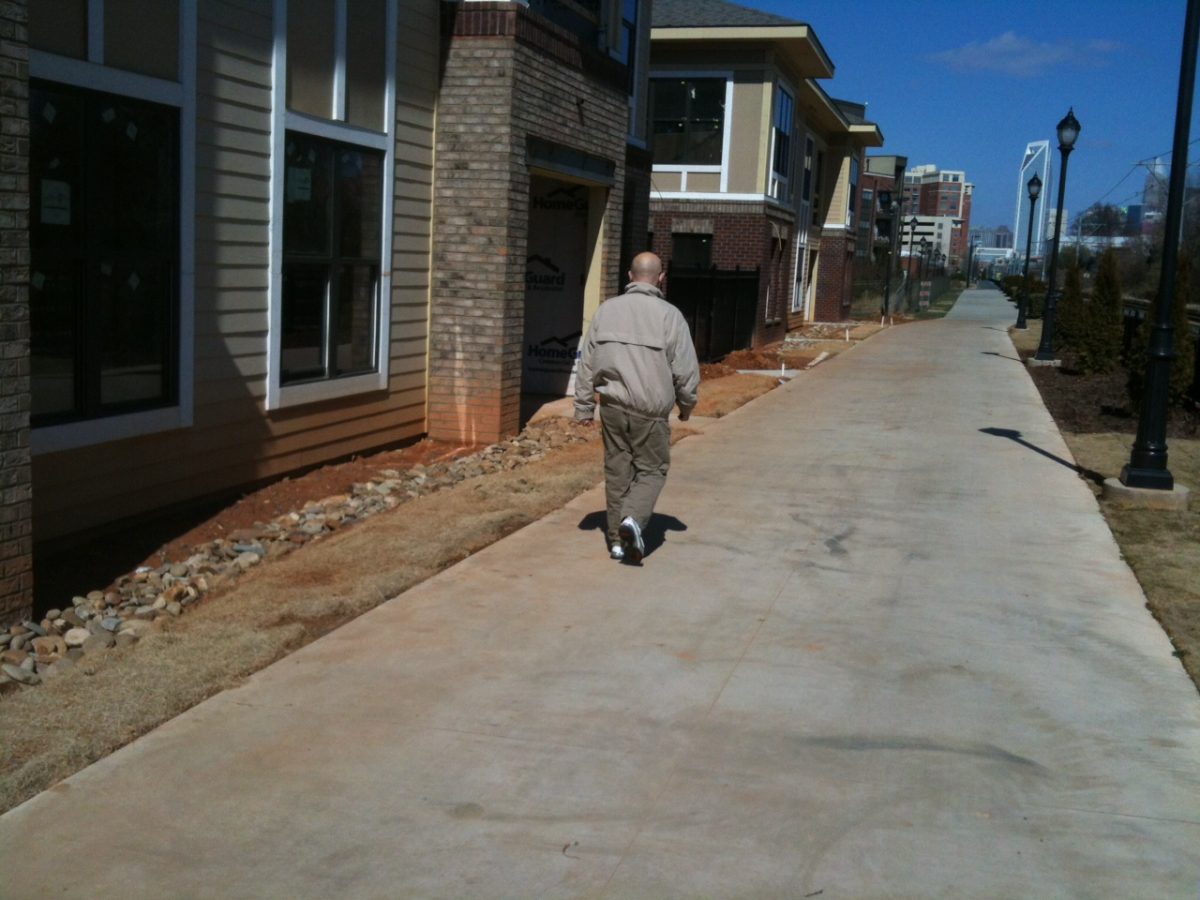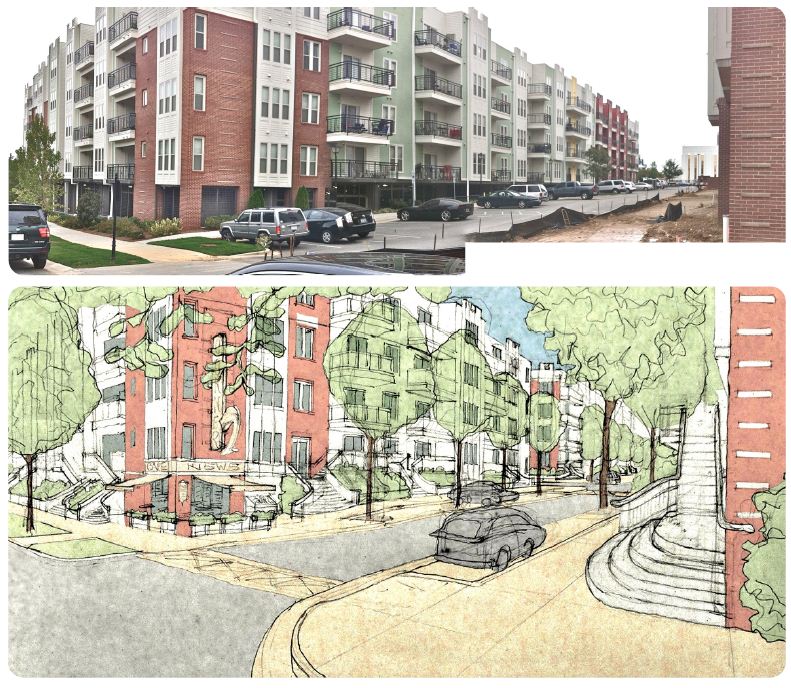South End eyes raising the bar for design

After hearing concerns about some of the new apartment construction in South End, the Charlotte Planning Department has hired a local urban design consultant to recommend possible changes to city zoning ordinances.
With 11 South End multifamily projects under construction, Historic South End director Ted Boyd at a public presentation in January urged “raising the development bar with design guidelines.” Boyd, who works to advance the South End neighborhood, said it’s important to focus on urban design issues and opportunities such as “ground floor building design, parking deck locations, building massing, scale and use, and respecting the street grid.”
The conversations over tightening the design guidelines for South End development began in December 2011, when development was in a lull. The South End community decided to take a closer look at its strategic vision, starting from the Station Area Plan. The idea, Boyd said in an interview, is to move from “good to great.”
A series of community design workshops (known as charrettes) collected opinions from residents and local business owners. That process yielded six focus areas:
- Develop the Camden Road area as the natural neighborhood center.
- Nurture authentic neighborhood retail.
- Plan and develop a public realm of parks, open space and recreation facilities.
- Improve neighborhood connectivity.
- Raise the development bar.
- Keep South End accessible to those who make it great.
Out-of-town developers were called in to give opinions on the development they saw. Although they said it was good, they also suggested zoning standards for the area are too loose, Boyd said. The standards wouldn’t encourage developers to do something great, because a neighbor could come in and build something not so great. The zoning ordinance doesn’t offer incentives for excellent design, Boyd explained.
The concern among some South End advocates is to raise the standards for the design of development, yet maintain a sense of authenticity, and to encourage projects that will look good in 50 years, rather than accepting developments built as quick investments that may deteriorate over the coming years.
Michael Dieden, president of Creative Housing Associates of Los Angeles, visited South End during the charrettes to assess the current projects. Dieden, whose firm specializes in designing transit-oriented neighborhoods, suggested that at a minimum the multifamily buildings should have retail on the ground floor, and if not that, then more flexible live-work spaces that could be converted later. Those kinds of spaces help keep sidewalks and the surrounding streets filled with activity, creating a more interesting environment.

A number of recent South End development projects appear to have given little attention to the street level. To cultivate a more pleasing street level experience, according to Dieden, windows, shops or other interesting details should be used, and parking should never be on the first level, fronting the street.
The point, in Dieden’s view, is to acknowledge the pedestrian and make street level interesting. Even walk-ups with windows 8 feet off the ground can offer more visual interest, he said.
Some Charlotte projects offer examples of steps leading up to front doors, to distance the doors from direct sidewalk access. Yet some of the newer apartments along the bike-pedestrian path next to the Lynx light rail line have doors and windows directly at sidewalk level, within feet of the peering eyes of passersby.

The consultant the city hired, Tom Low of the Charlotte office of Duany Plater-Zyberk, has toured South End, photographed existing developments and, with sketches, proposed different views that show more attention to the kind of pedestrian qualities that stronger design standards could create.
Low’s illustrations address details such as showing how adding trees and a courtyard can create a place people might want to sit in. Another example looks to find ways to make ground-floor parking more interesting to people walking past. Some of Low’s sketches, which he displayed in December at a public meeting of the nonprofit Civic By Design forum, show how adding steps up to apartments set above ground-floor parking can enhance the appearance of the project and make street-level more pleasant.
The corners of ground-floor parking lots could make small retail sites, the sketches show.

So far those sketches are just ideas. Developers aren’t required to do those things. So the city’s planning department is reviewing suggestions for amending some parts of the zoning ordinance standards pertaining to the Transit Oriented Development districts – primarily TOD-M (mixed-use), but also TOD-R (residential) and TOD-E (employment). Planners say that for now, all options are on the table, including making no changes.